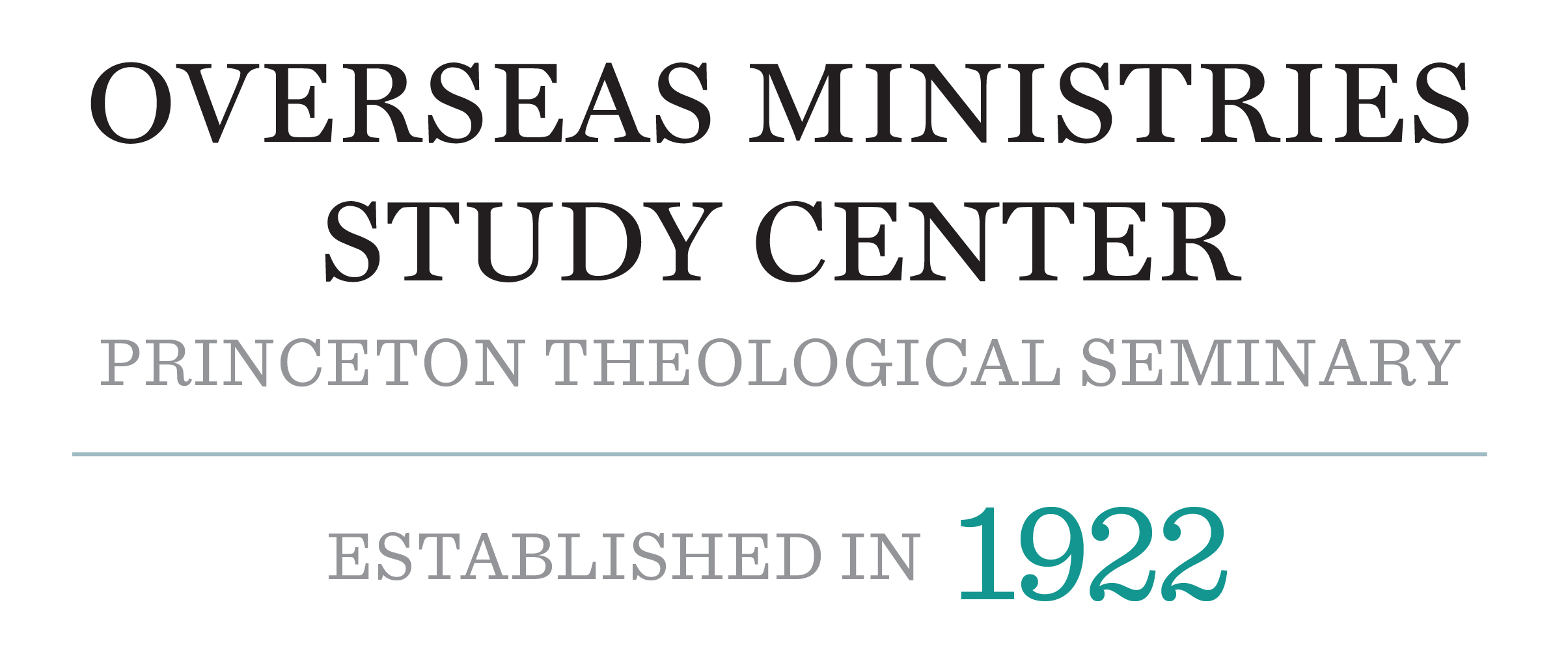By Eric Barreto – Weyerhaeuser Associate Professor of New Testament – Princeton Theological Seminary
This is the fourth in a series of eight posts that spotlights paintings from our Artist in Residence program in dialogue with Christian scripture to offer spiritual windows for reflection and prayer. These reflections are based on Princeton Seminary’s Summer 2022 Chapel series. You can view the service from which this post is based HERE
SCRIPTURE READING – Luke 24:13-35
The Road to Emmaus story is emblematic for Luke. Here, key themes of the Gospel come together in one memorable, powerful story.
There is food, of course. In a Gospel that dwells on tables, the food shared there, and the kind of belonging a meal can nurture, it should be no surprise to encounter a Jesus who hosts his friends, who shares what he has, who delights and forms those with whom he eats. Such are the characteristics of Jesus’ love for a good meal.
There is a road, of course. In Luke and its sequel Acts, Jesus and his followers are wanderers on the road so much so that we need a map in hand as we read these texts, a bit like the map at the front of a fantasy novel. The cartography of the gospel’s journey reveals the shape of the good news. On the road, Jesus and his disciples encounter vulnerability, hunger, want, even the threat of losing one’s life. On the road, Jesus and his disciples rely on the kindness of strangers and hosts. On the road, Jesus and his disciples discover that faith is not a set of beliefs, a list of theological affirmations. No, faith on the road is a way. A way of life. A way of moving through the world. A way of drawing God’s resurrection power in our wake as we follow the path God has set before us. Such are the characteristics of Jesus’ wandering ways.

But there’s another theme here. One, that today’s piece of art makes evident. Emmanuel Garibay’s “Emmaus” is arresting. I remember seeing it for the first time at OMSC’s offices and finding myself mesmerized. The joy. The laughter. But most of all the surprise.
You see, Luke tells us that these disciples on the road fail to recognize Jesus but not why they fail to recognize him. I wonder if the trauma they suffered, the great loss they encountered made it so that it seemed utterly impossible that their friend could be with them. We saw him. We saw him tortured. We saw the full weight of imperial violence rest on his broken body. This can’t be him. It simply can’t be. That trauma, that grief had closed off the possibility in their imaginations that the promise of resurrection, redemption, salvation from the grips of empire’s violence could be fulfilled. The possibility that the world as they know, as we know it might change was lost in the wave of death and loss and grief.
And thus maybe here we see one more key theme in Luke’s account of the Gospel.
Jesus is always, always, always a surprise. The moment you think you know who Jesus is, she comes to you on the road, laughing at a table. The moment you think you know who Jesus is, you forget to notice the wounds on her hands. The moment you think you know who Jesus is, her infectious laughter heals that hurt you thought you had forgotten.
Emmaus, then, is a reminder that the Jesus of the bountiful table and the wandering road is uncontainable, even by the best of our theological efforts. This Jesus escapes our categories and assumptions. This Jesus refuses to be constrained by my myopic grasp of grace. This Jesus is simply not who we thought she was.
When you meet her then, when you meet Jesus, be ready to see God’s face in her wide smile, of course. In her love of good food and drink, yes. In the joy she evokes in us. But also in the inedible wounds empire left on her body. But especially in the joy-filled surprise she evokes in us, in those who suffer under the weight of empire, in those whose vision of grace has been eclipsed by so much grief and loss, in those of us who need to see Jesus again but as if for the first time.




